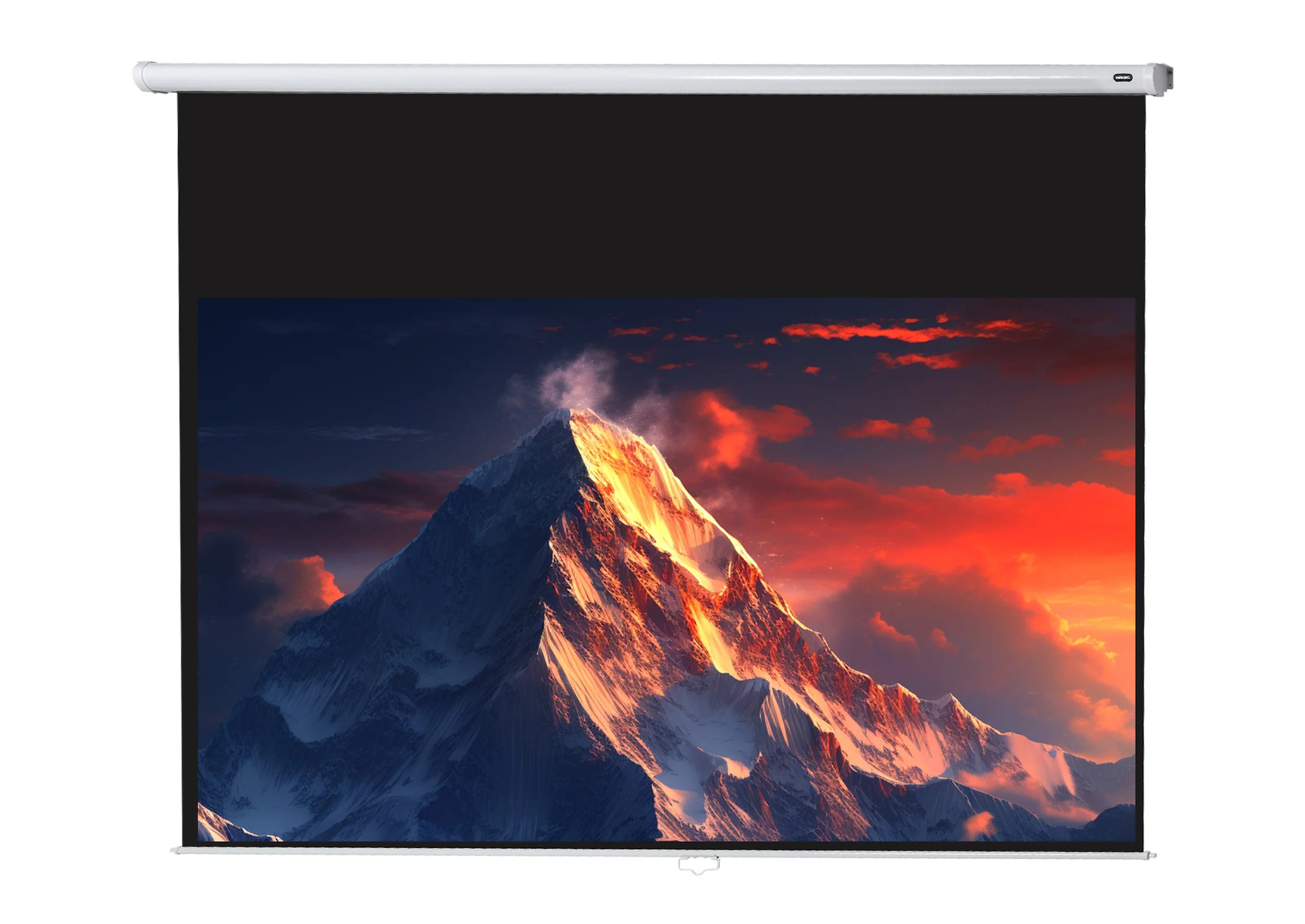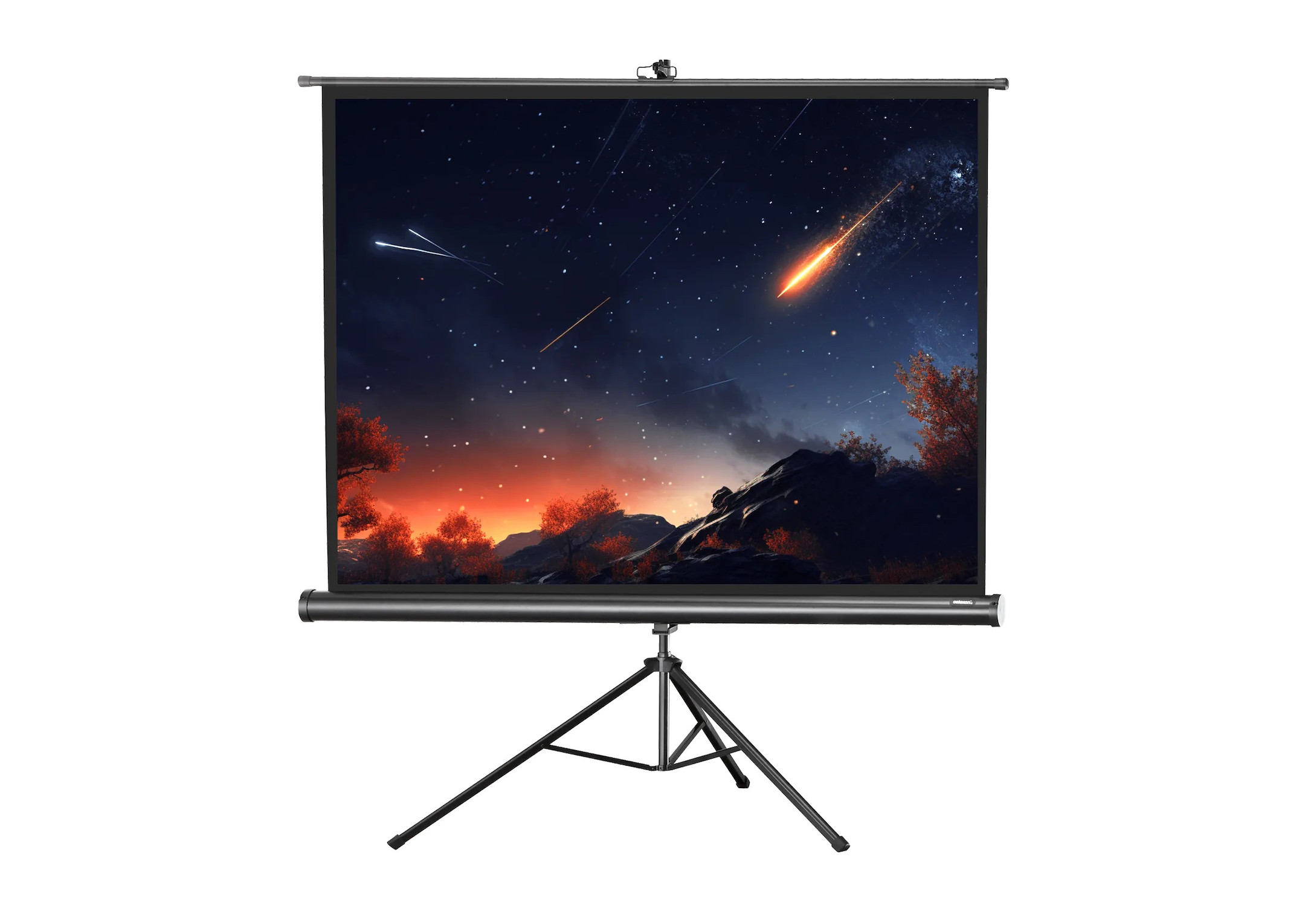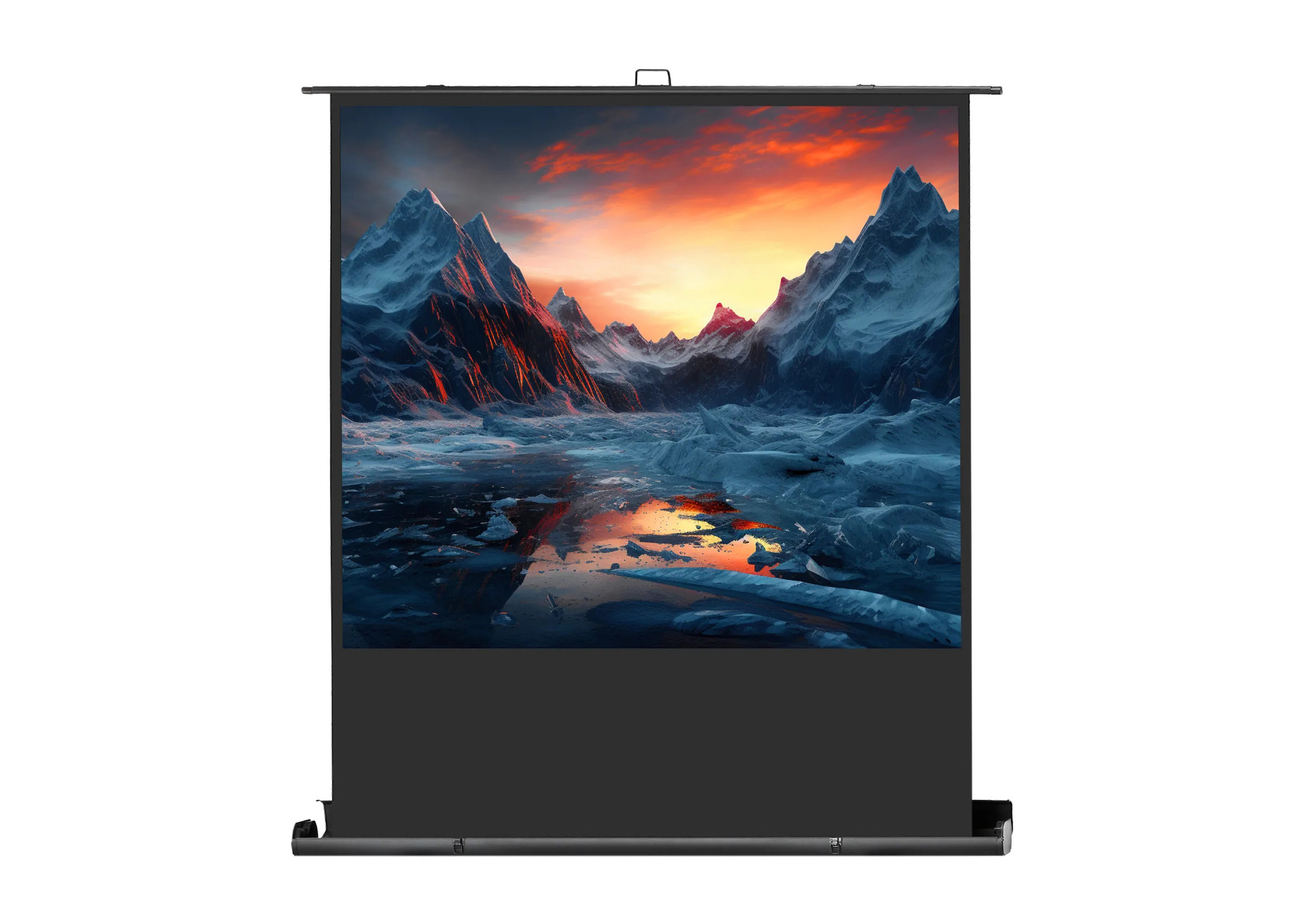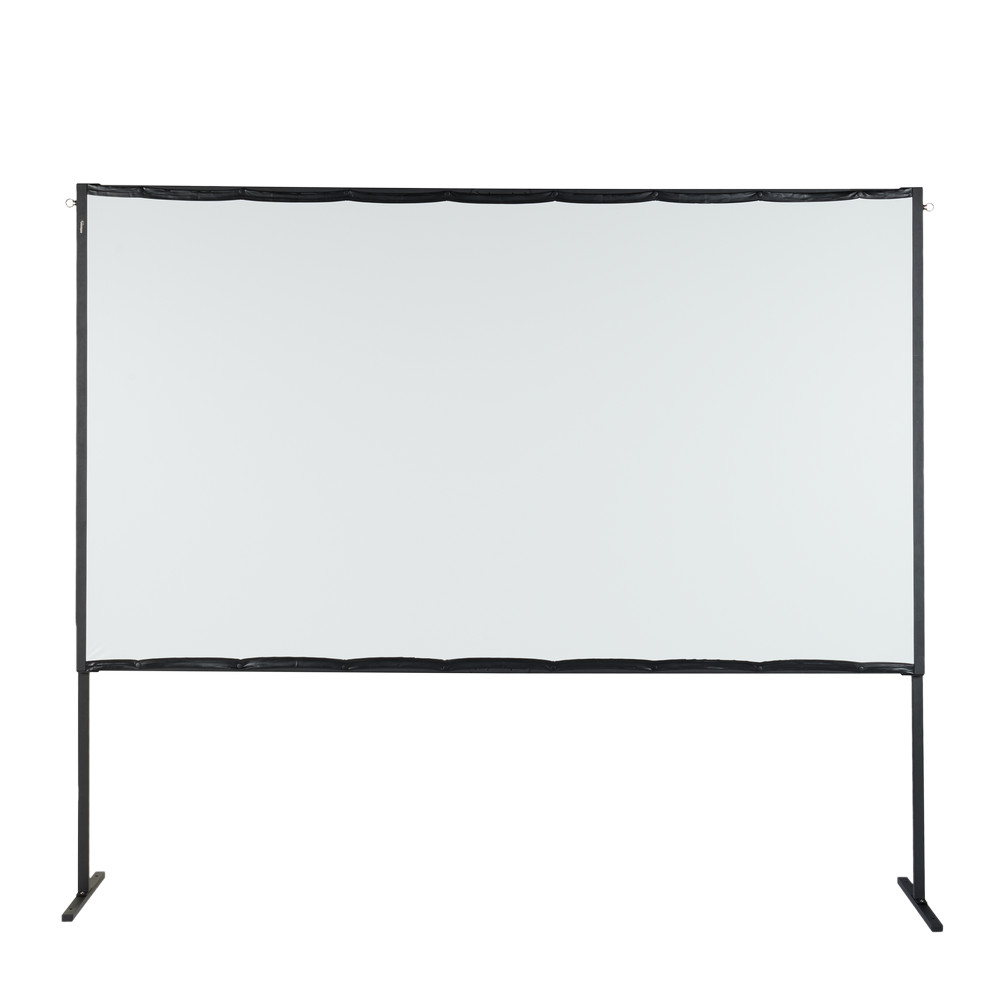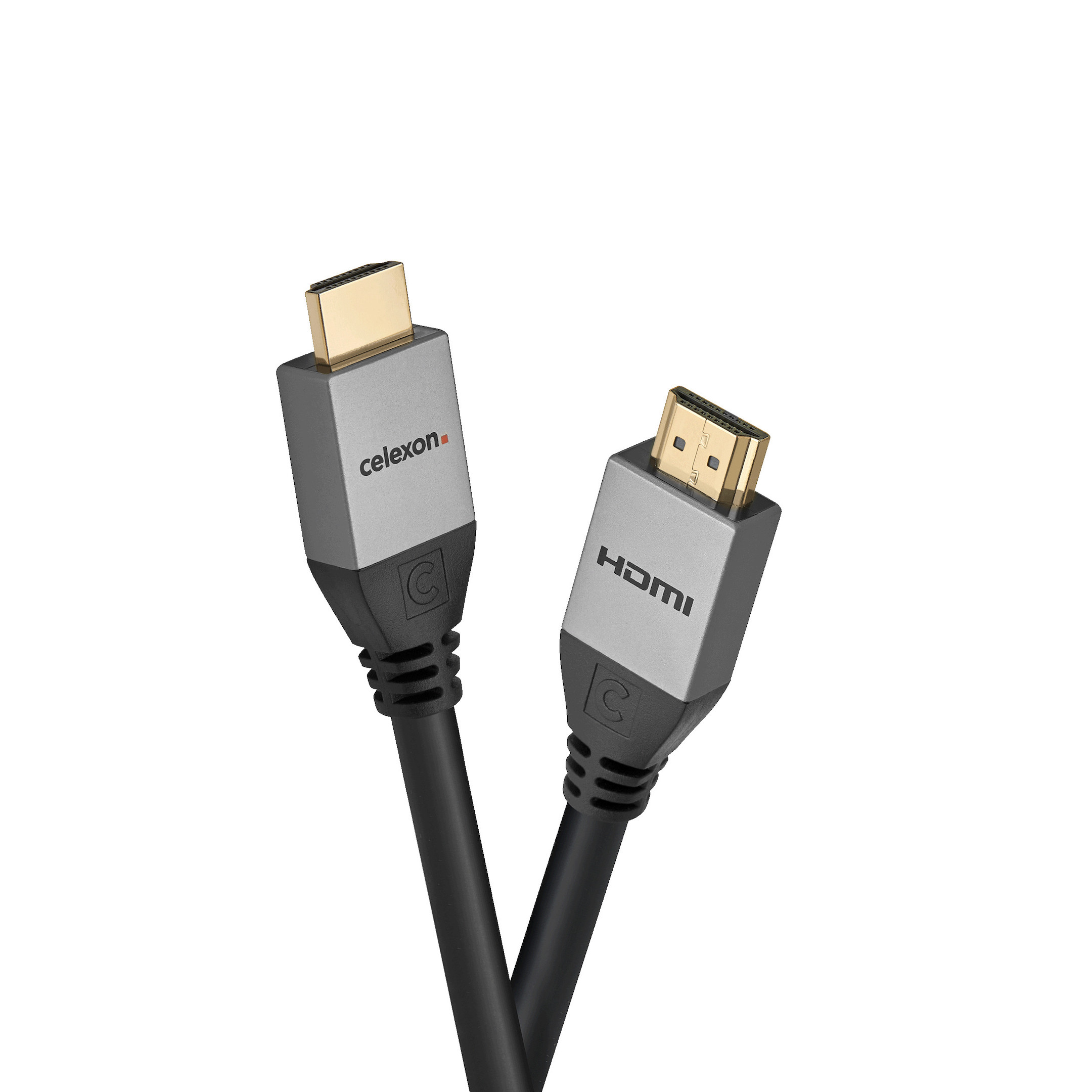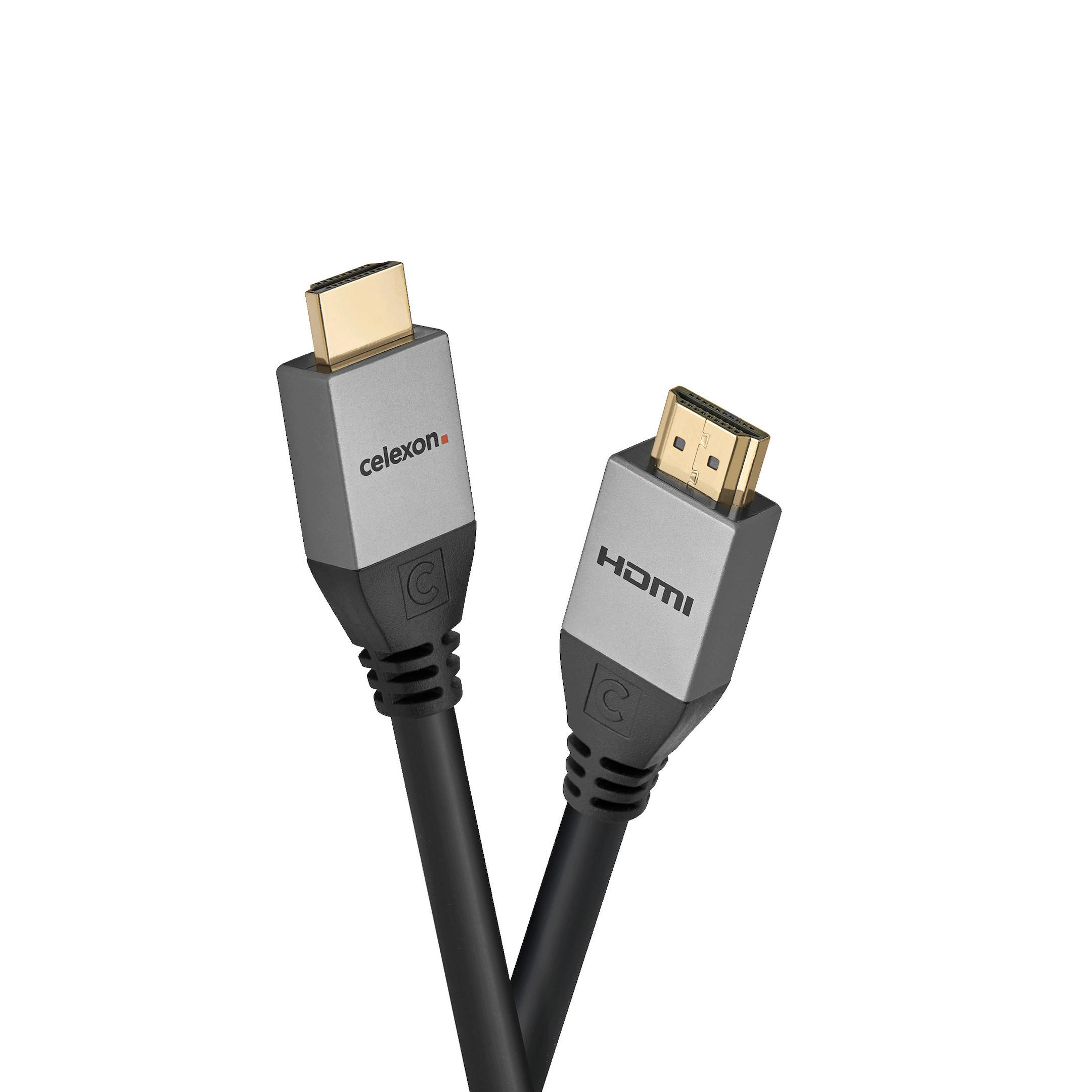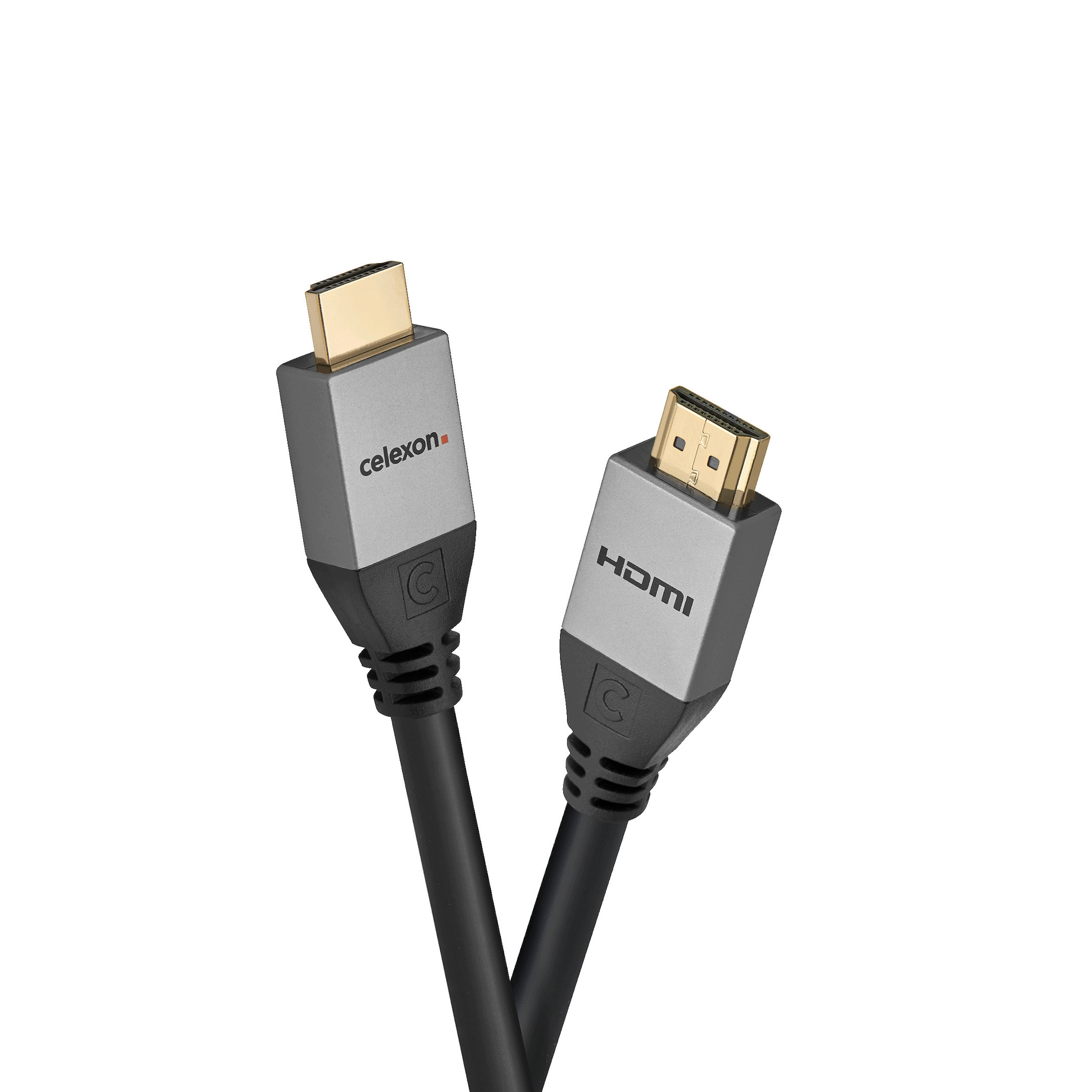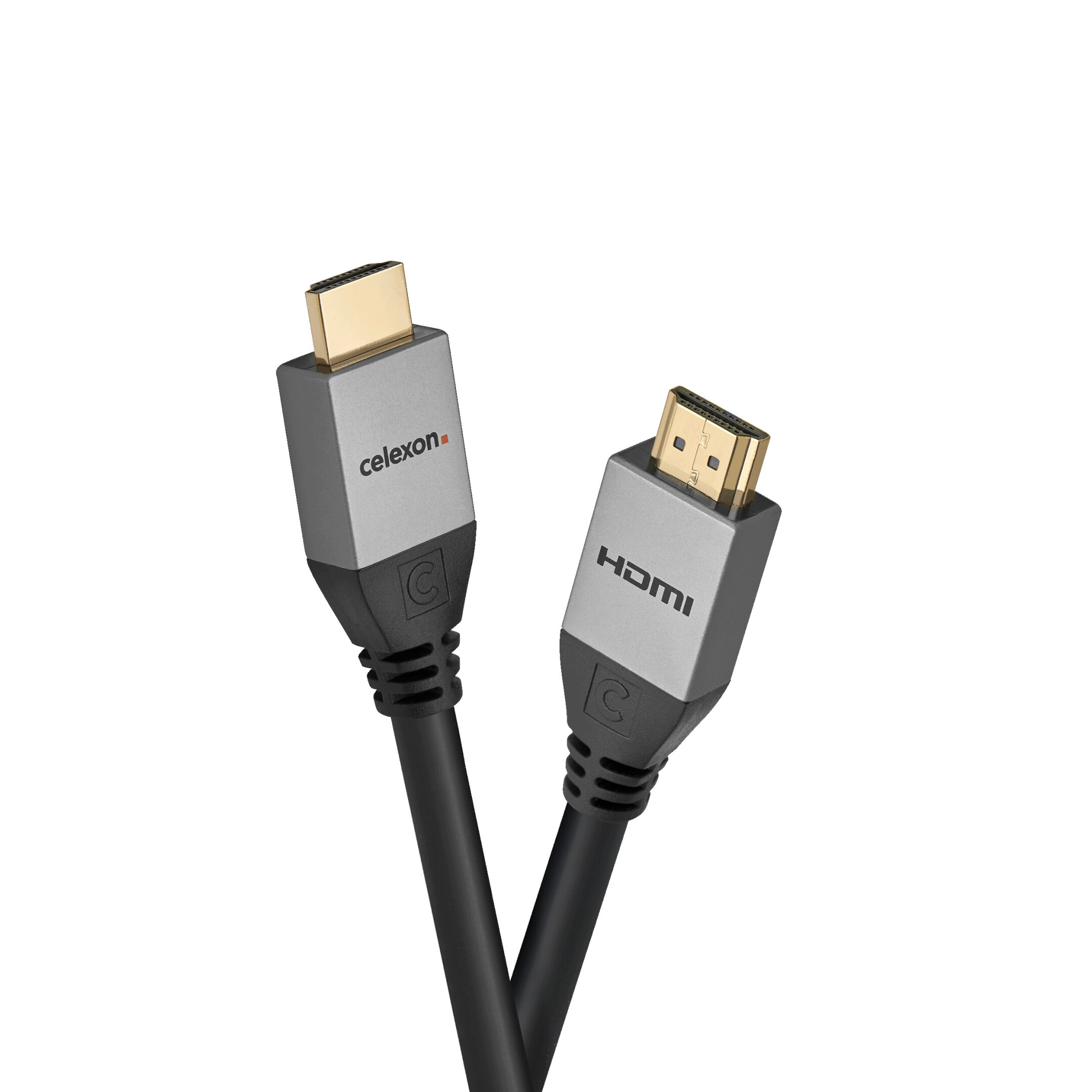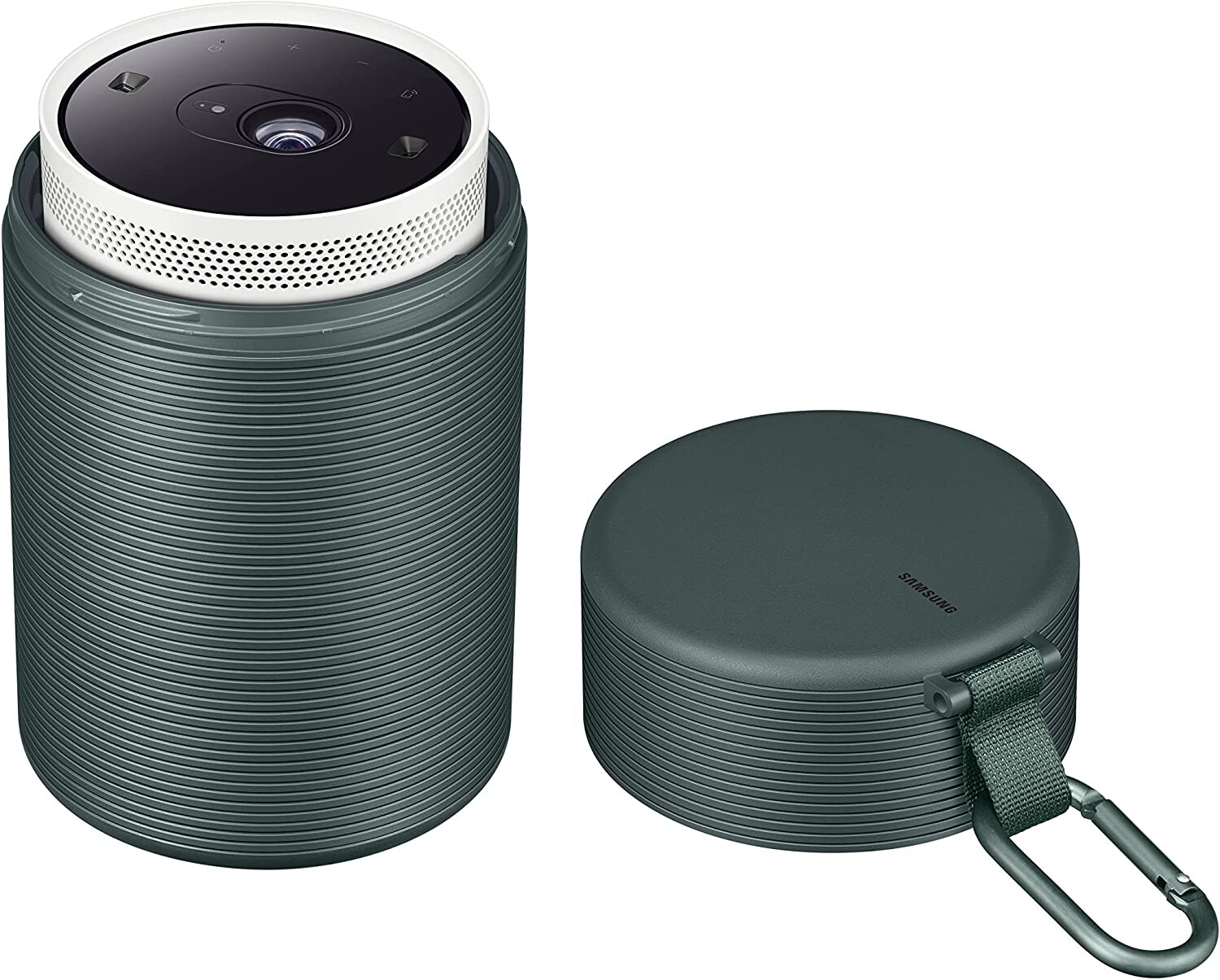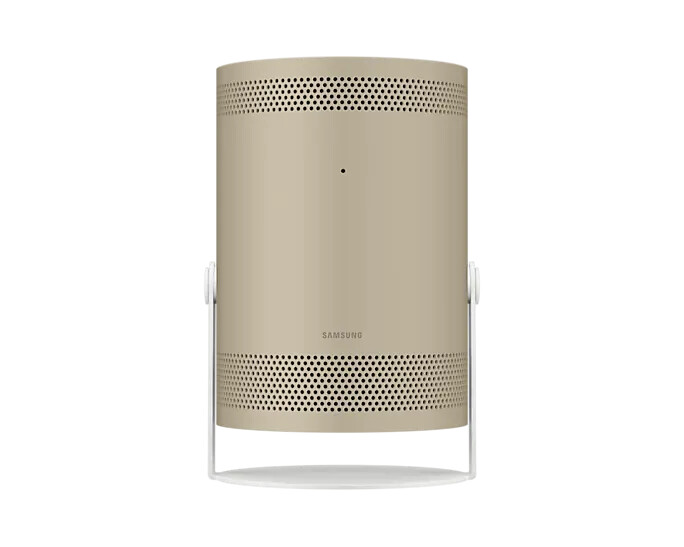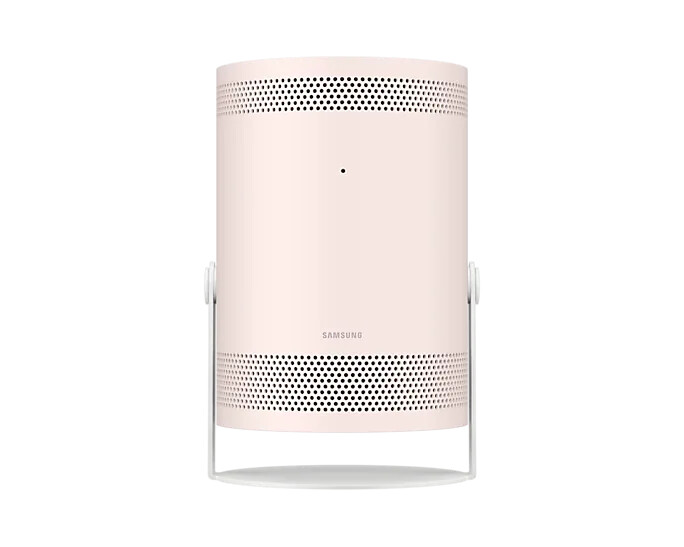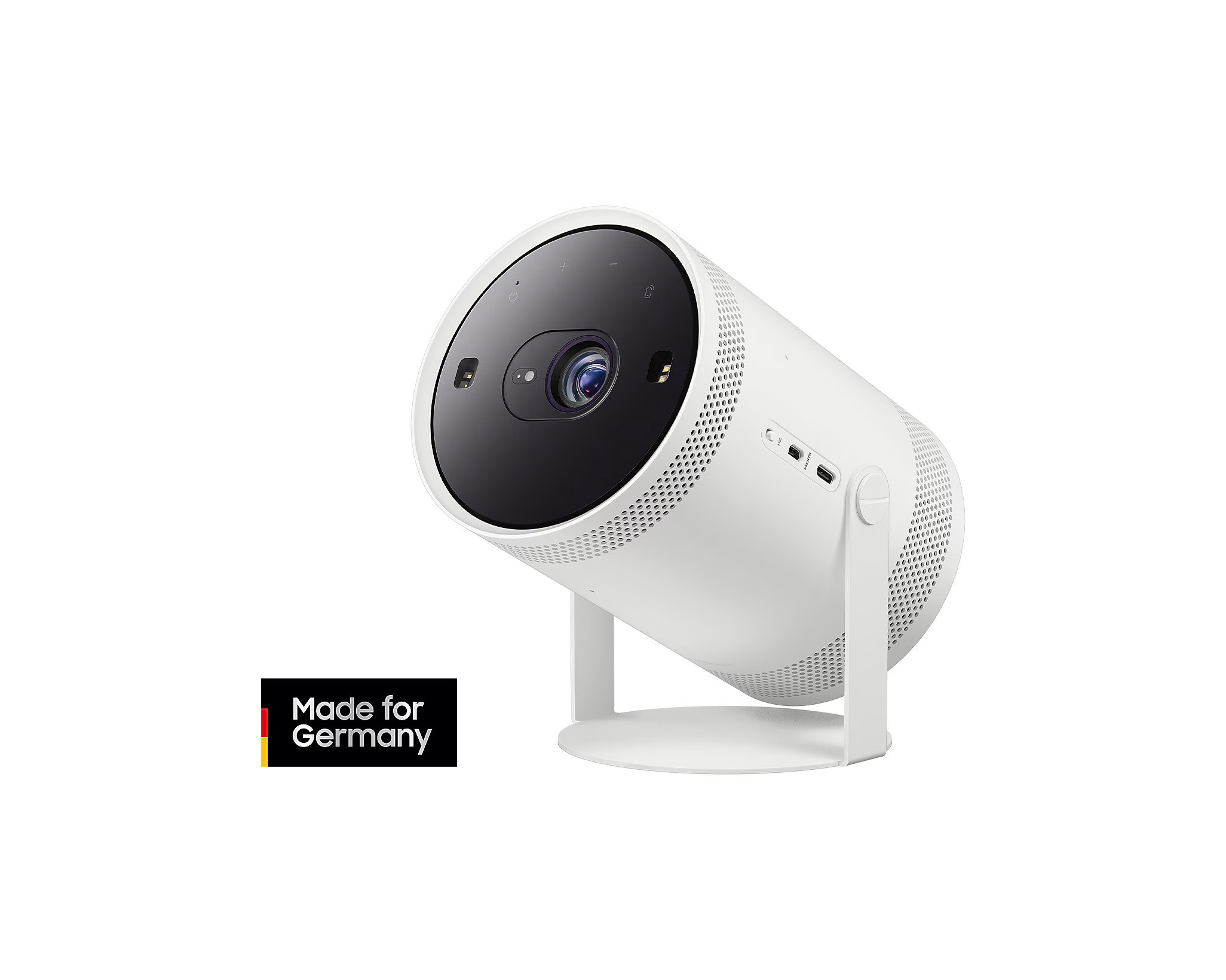



























£697.06*
- Light Brightness 300 Lumen
- Resolution 1920 x 1080 Full HD
- Aspect Ratio 16:9
- Operating noise 30 dB


Frequently purchased together
Product information
The Freestyle is an innovative, smart projector from Samsung that lets you present your favourite shows anywhere. With this high-tech device, you are no longer limited to traditional TV screens or fixed projectors - you have the freedom to take and present your media content wherever you go. Whether you're planning a movie night, giving a presentation or simply want to play your favourite music videos, the Freestyle gives you the opportunity to show multimedia content in brilliant Full HD resolution. It creates an impressive image area of up to 100 inches, so you and your audience can enjoy an authentic and cinema-like experience.
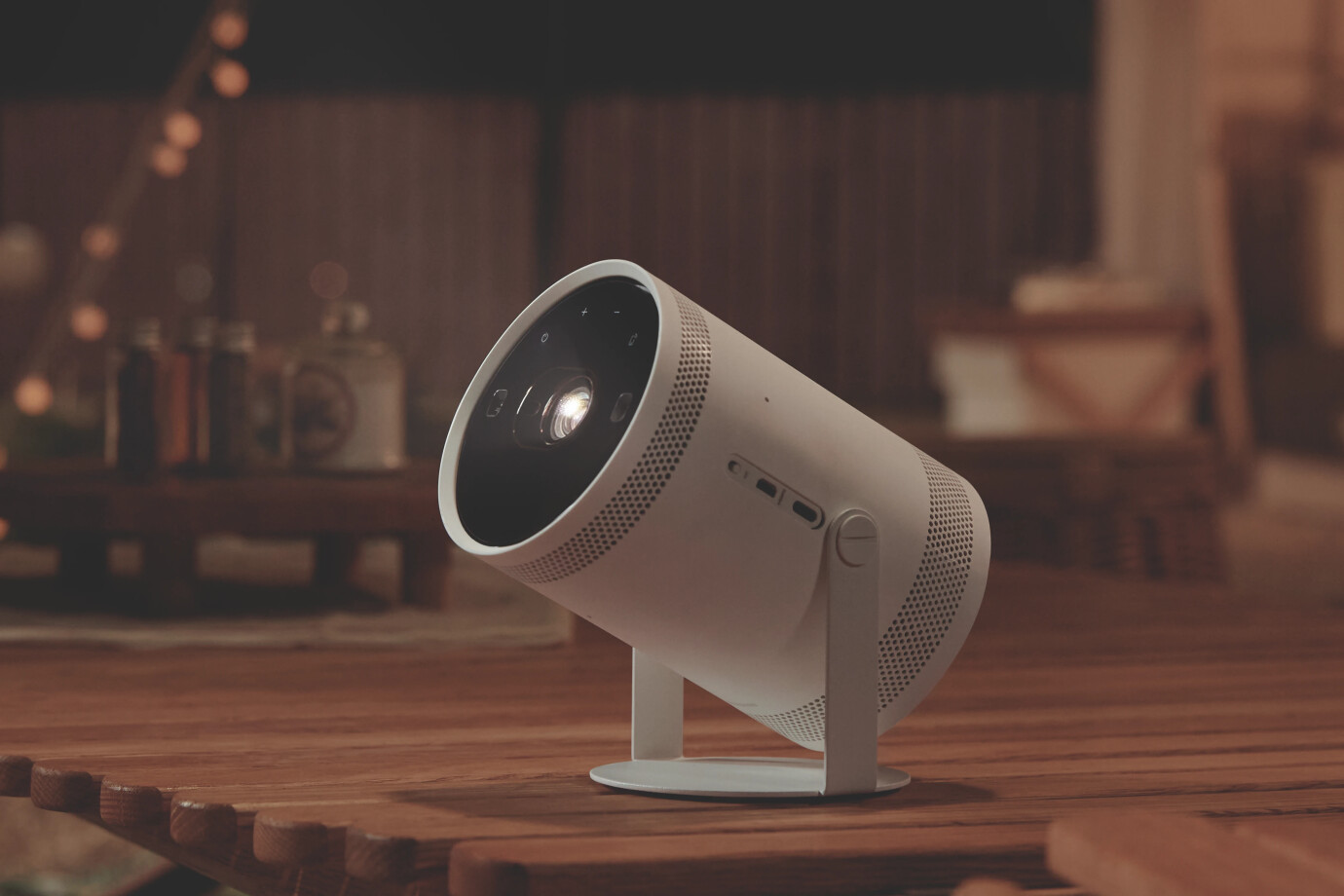
Another highlight of this smart projector is the state-of-the-art keystone correction, which works both horizontally and vertically and offers intelligent image adjustment. This advanced function ensures stable and distortion-free image projection, regardless of the position of the projector. This means that the image quality always remains optimal, even if the projector is not positioned exactly at right angles to the projection surface. In addition to the high picture quality, the Samsung Freestyle has 360-degree speakers. These significantly improve the viewing and listening experience as they produce a voluminous and room-filling sound. The sound is emitted evenly in all directions so that it can be heard clearly and distinctly from any position in the room. The result is an immersive, multi-dimensional experience that goes far beyond what conventional televisions or projectors can offer. With the Samsung Freestyle Smart Projector, every show becomes an impressive audiovisual event.
Experience the following highlights:
- Mobility: Samsung Freestyle enables the presentation of media content anywhere.
- Image quality: Projection in Full HD up to 100 inches for a cinema-like experience.
- Keystone correction: Ensures stable, distortion-free image projection.
- 360-degree sound: Provides an immersive, multi-dimensional listening experience.
- Technological innovation: Surpasses the performance of traditional televisions and projectors.
Enjoy your content in brilliant picture quality
Experience a fascinating audiovisual experience that is virtually independent of the location and type of content presented. Whether you're relaxing in a cosy living room, following a presentation in a conference room or sitting outdoors in the summer garden - the high picture quality and intense colours ensure an impressive viewing experience.
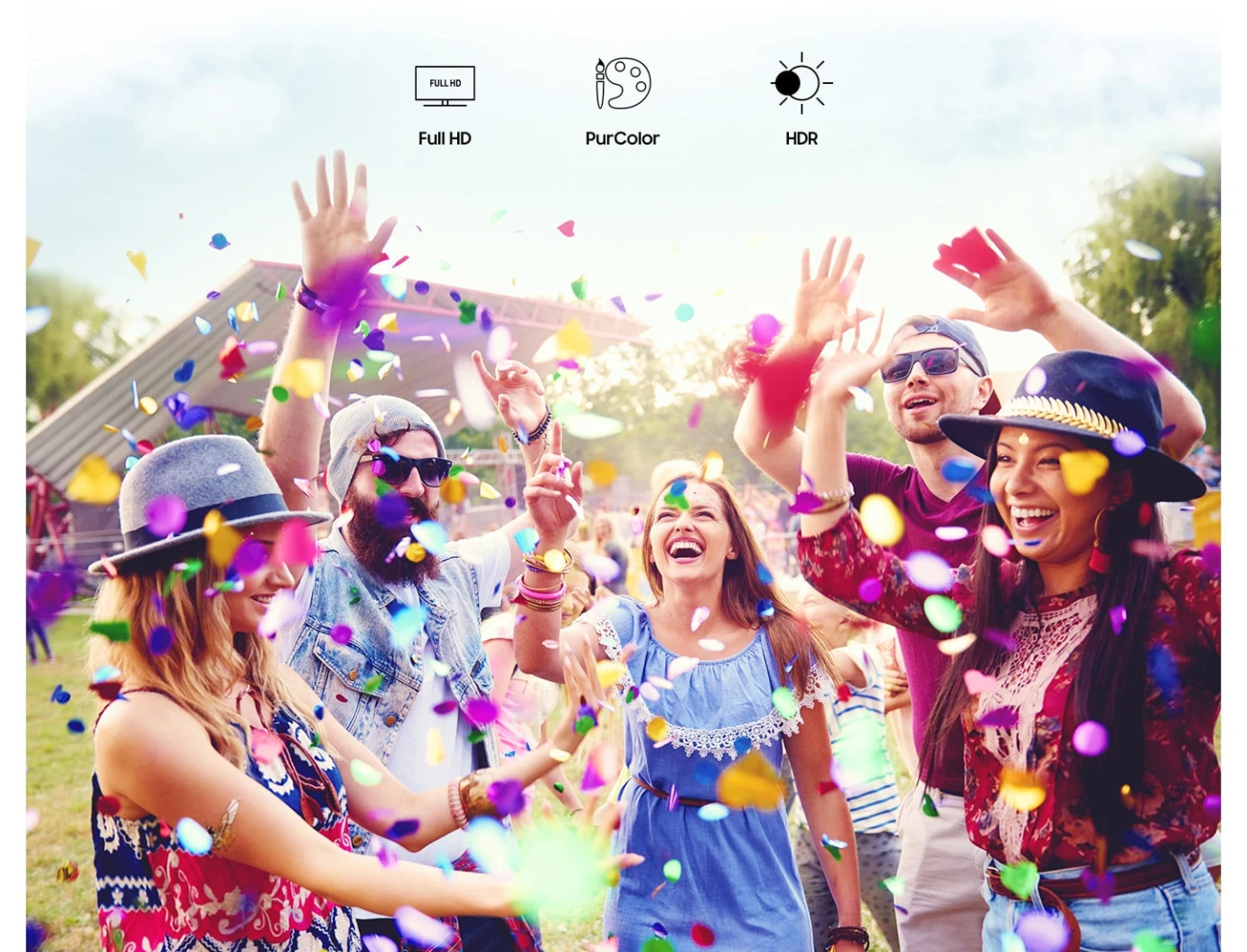
A key component of this compelling experience is the HD resolution, 1080p Full HD to be precise. This cutting-edge technology ensures that every last detail of your media content is displayed with remarkable clarity and sharpness. With 1080p resolution, you can see every detail, every texture and every nuance of colour for an even deeper and more immersive viewing experience. But it's not just the high resolution that makes this experience so unique. Thanks to PurColor colour technology, the device brings exceptional colour intensity to the screen, resulting in vibrant, rich and lifelike colours. Whether bright blue, deep red or delicate green - PurColor technology ensures that all colours are displayed in all their glory and intensity.
Finally, the device is HDR-compatible, which means it supports High Dynamic Range content. With HDR, you can enjoy content with a wider colour spectrum and a higher contrast ratio, resulting in deeper blacks and brighter whites. Scenes appear more realistic and dynamic, and even the finest shades and colour transitions become visible.
Intelligent image adjustment with XR Blending
Position the projector flexibly in the room, depending on your requirements and preferences. You have the option of placing the device up to 2.6 metres away from a wall or other suitable projection surface. This gives you considerable flexibility in terms of where you place the projector, which is particularly useful if you need to cater for different room sizes or audience capacities.
But the real convenience of this smart projector lies in its ability to automatically adjust the image. This advanced function ensures that the projected image is always optimally tailored to the respective projection surface. Regardless of how you position the projector, automatic image adjustment continuously adjusts the projected image to create a perfectly square viewing area. This technology effectively eliminates any image distortion that could be caused by the positioning or angle of the projector. In addition to correcting the aspect ratio, the automatic image adjustment also ensures that the projected image is always displayed in Full HD resolution. With a resolution of 1080p, your media content is presented in the best quality so that you can see every detail in razor-sharp clarity. Whether you're watching a feature film, giving a PowerPoint presentation or playing a video game, you can be sure that the image will always be optimally adjusted and displayed in outstanding quality.
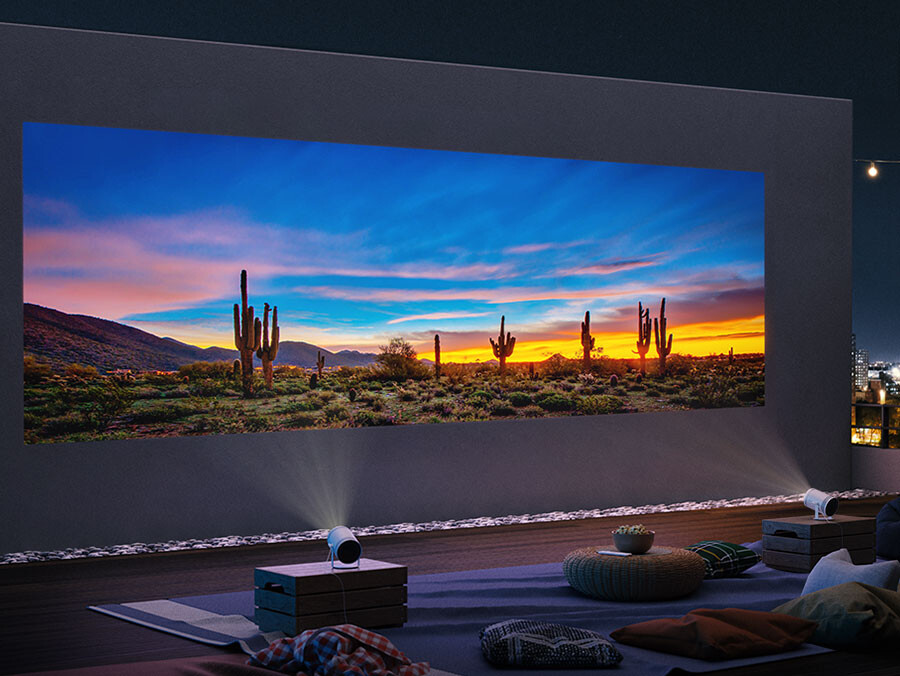
Space-filling 360˚ sound
The Freestyle has an outstanding integrated speaker with an output of 5 watts. This powerful speaker is not just any ordinary sound output. It's an advanced 360-degree speaker designed to distribute sound evenly in all directions. This allows for an immersive, room-filling sound experience that ensures every listener enjoys consistently high audio quality, no matter where they are in the room.
The quality and depth of sound produced by this speaker is impressive. With an output of 5 watts, the speaker offers a rich, full-bodied sound that captures the subtlest nuances of any audio content. Whether you're watching a film, listening to music or playing a video game, the sound is always clear, detailed and impressive. The 360-degree speaker allows you to enjoy an outstanding sound experience from different places in the room. Regardless of whether you are sitting directly in front of the projector, lying on the couch or standing in the kitchen, the sound will always reach you clearly and distinctly. The sound is evenly distributed throughout the room, creating an atmosphere similar to that of a live concert or cinema.
Easily manageable
The main feature of this smart projector is its impressive compactness. Despite its technological capabilities and high feature set, Samsung has designed The Freestyle in a small, portable format that you can easily slip into a bag and take with you wherever you go. It's so compact that it hardly takes up more space than a book or a water bottle.
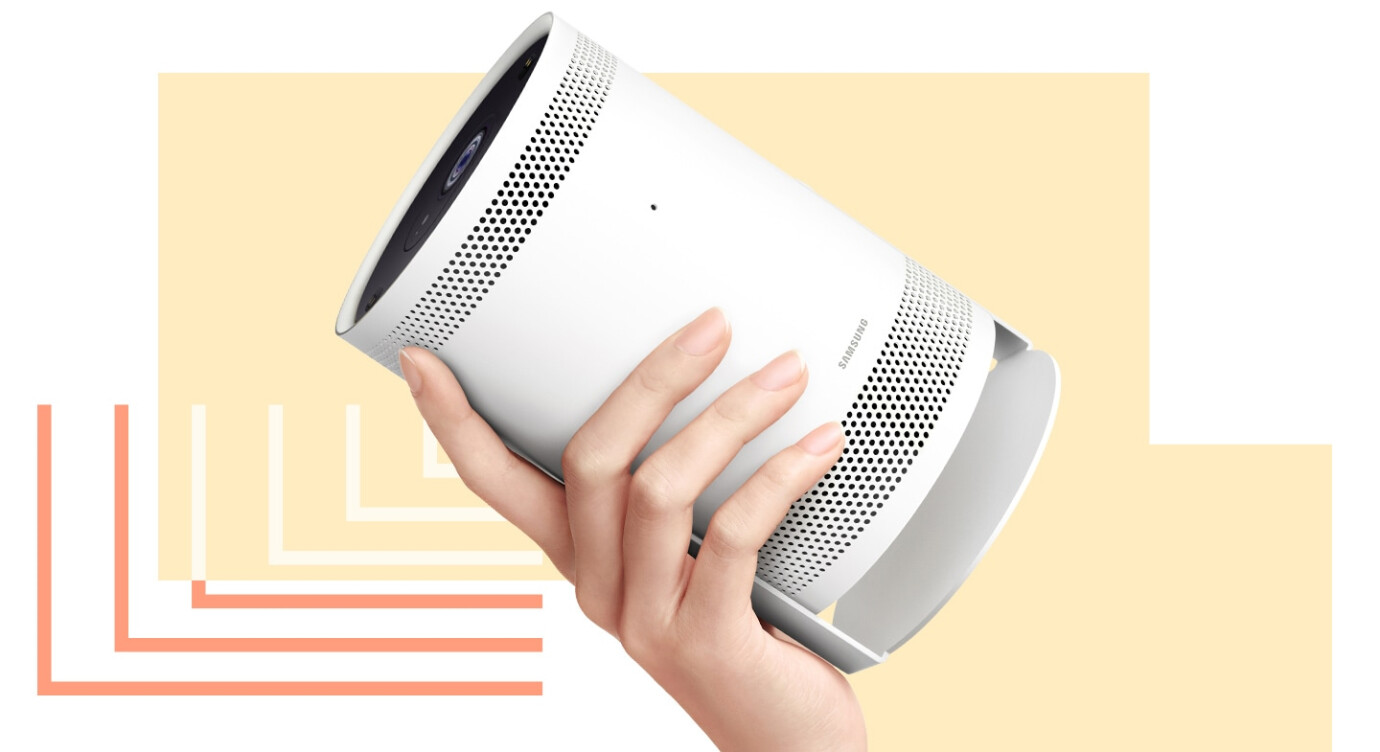
But The Freestyle is not only compact - it is also amazingly mobile. Thanks to its lightweight design, it's no problem to take it with you when travelling, to a friend's house, to the office or even for an outdoor movie night. There's no longer any need to rely on a fixed location for your entertainment - with The Freestyle you can literally take your media content with you wherever you go. Discover the freedom and flexibility that The Freestyle offers. It allows you to take your favourite shows, films, presentations or games with you wherever you go and enjoy them in impressive quality. This smart, compact and mobile projector is a powerful and versatile device that can change the way you consume media.
Automatic keystone correction
This feature gives you complete freedom in the placement of your projector by responding to your individual requirements and the given space. Whether you place the projector on a table, a shelf, the floor or even on a slanted surface, you can be sure that your visual content will always be displayed correctly. Automatic vertical and horizontal alignment is a technologically advanced feature that continuously ensures that the projected image is always optimised. This means that it automatically corrects and adjusts the projected image to eliminate distortion and ensure that the image is always correctly aligned, regardless of the position or angle of the projector.
This intelligent function takes into account both the vertical and horizontal axes to create a balanced, correctly aligned image. The vertical alignment ensures that the image is always upright, while the horizontal alignment ensures that the image is always straight. Together they provide a comprehensive solution for automatically adjusting the image to ensure that your visual content is always displayed in the best quality. With this feature, the projector gives you complete flexibility in placement by automatically delivering the best possible image quality, regardless of where and how you place it. This means you no longer have to spend a lot of time manually aligning the projector and can instead focus on enjoying your media content. The automatic vertical and horizontal alignment ensures that you always have the best viewing experience, regardless of the conditions or limitations of your room.
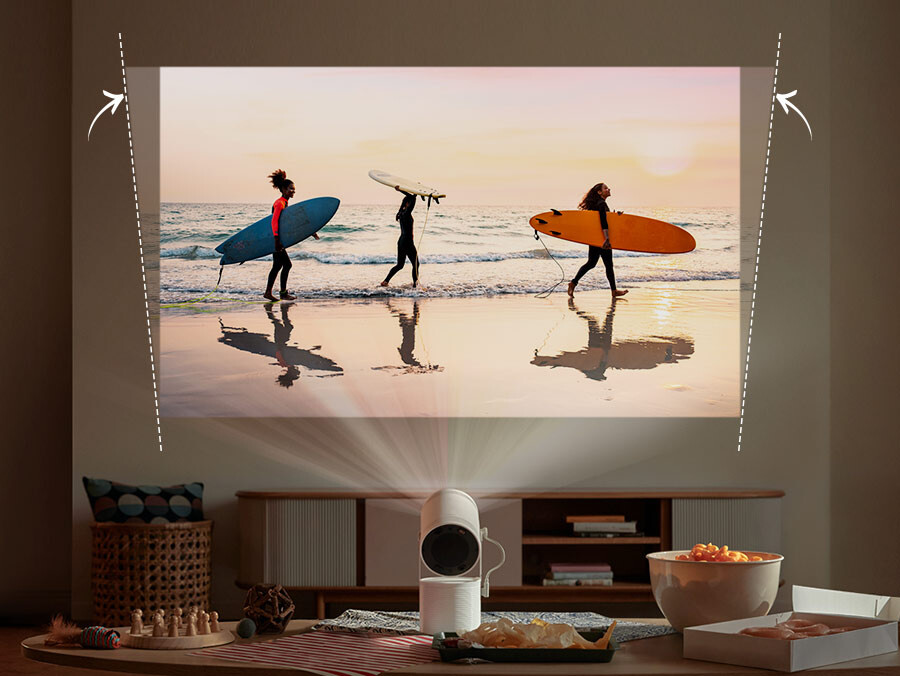
Auto-focus for clear images
As soon as you switch on the device, the auto-focus function springs into action and produces a sharp and clear image in no time at all. This happens in just a few seconds, giving you almost instant access to high-quality visual content. Whether you're watching a film, giving a presentation or simply displaying your favourite images, you can be sure that everything will be displayed with the utmost clarity and sharpness. Such a feature allows you to concentrate fully on your entertainment. Instead of spending valuable time adjusting settings, you can immediately immerse yourself in the experience and enjoy the razor-sharp images that The Freestyle delivers.
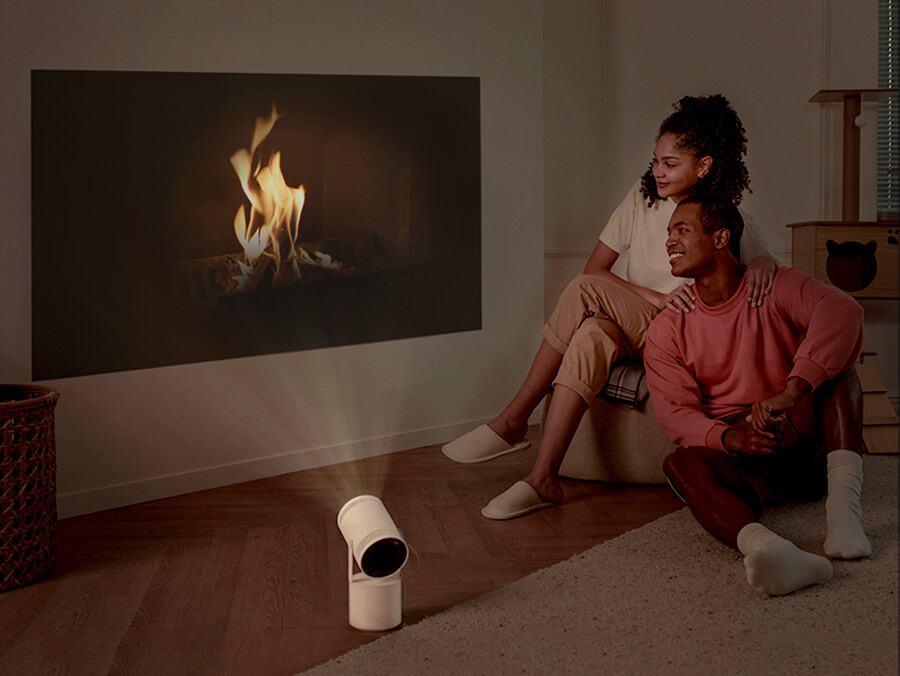
Fascinatingly self-aligning
The built-in automatic crooked image correction works quickly and accurately to detect and correct any kind of image distortion. If the projected image is skewed or distorted, The Freestyle will instantly straighten and adjust it to create a perfectly balanced, rectangular image. This is done seamlessly and without any manual intervention, so you can enjoy optimal image quality at all times.
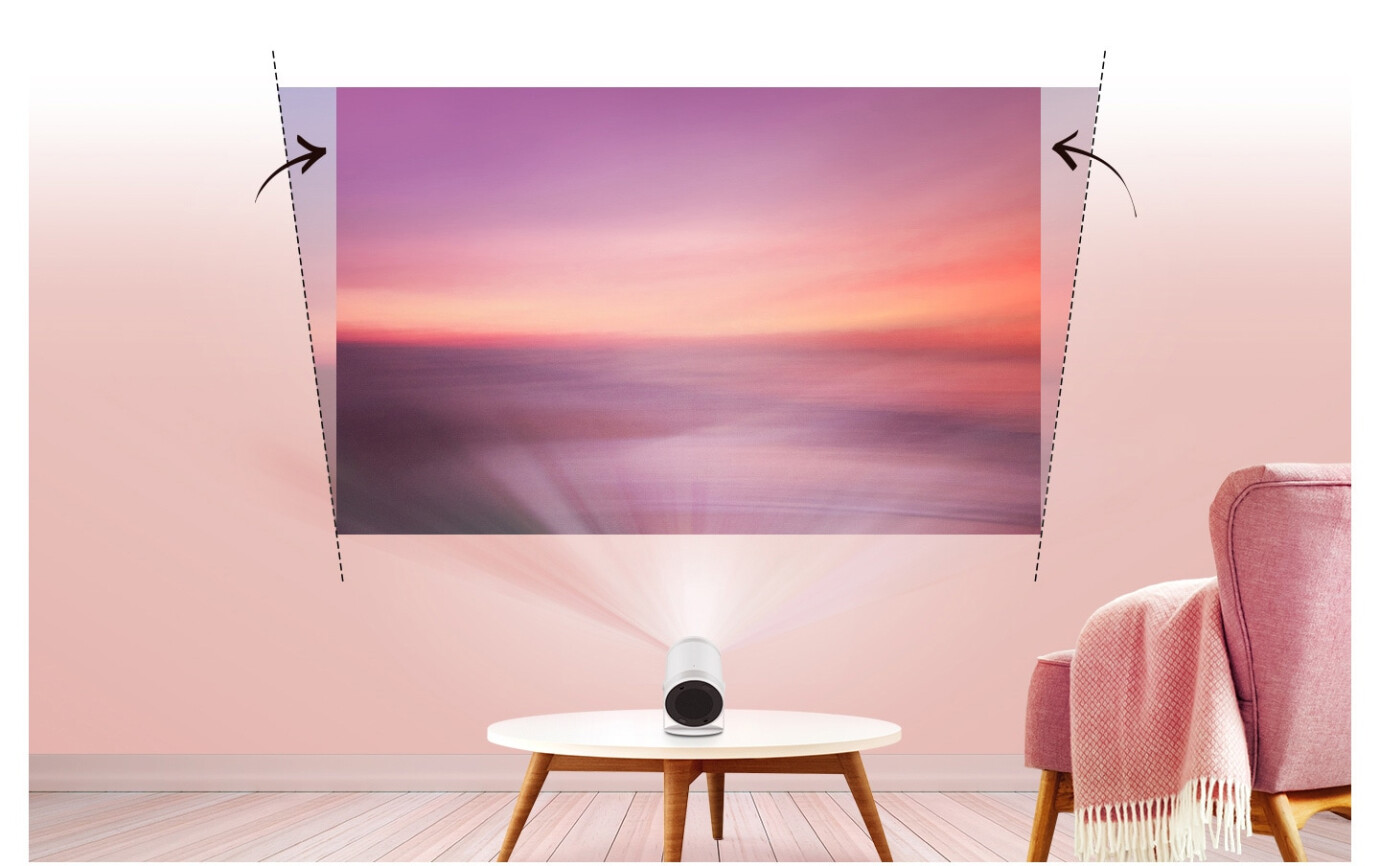
This function is particularly useful in environments where the positioning of the projector is not optimal. Even if the projector is placed on an uneven surface or is projecting from an unusual angle, you can be confident that The Freestyle will always deliver a straight and clearly defined image. Whether you are working in a small room, on an uneven floor or in a large auditorium, with The Freestyle the projected image will always be correct. Using The Freestyle is very simple: all you have to do is switch on the projector. As soon as the device is running, the automatic correction takes over and ensures that the projected image is perfectly aligned at all times. So you can relax and enjoy your media content in the best quality without having to worry about technical details.
Auto Levelling
The Samsung The Freestyle's Auto Levelling feature allows for impressive versatility and adaptability by ensuring a straight alignment of the projected image on almost any type of surface. This advanced technology automatically detects unevenness and tilts the projected image accordingly to ensure it's always straight and well aligned.
Whether you set up the projector on a rocky campsite, place it on a soft mattress in your bedroom or use it in an unconventional setting like a boat or cabin, the Auto-Levelling feature adjusts the image so that it's always perfectly aligned and distortion-free. This innovative feature goes beyond the usual uses of a projector and gives you exceptional flexibility. It doesn't matter if the surface is uneven, soft, hard or anything in between. With The Freestyle's auto levelling feature, you can be sure you'll always get a crisp, well-aligned image.
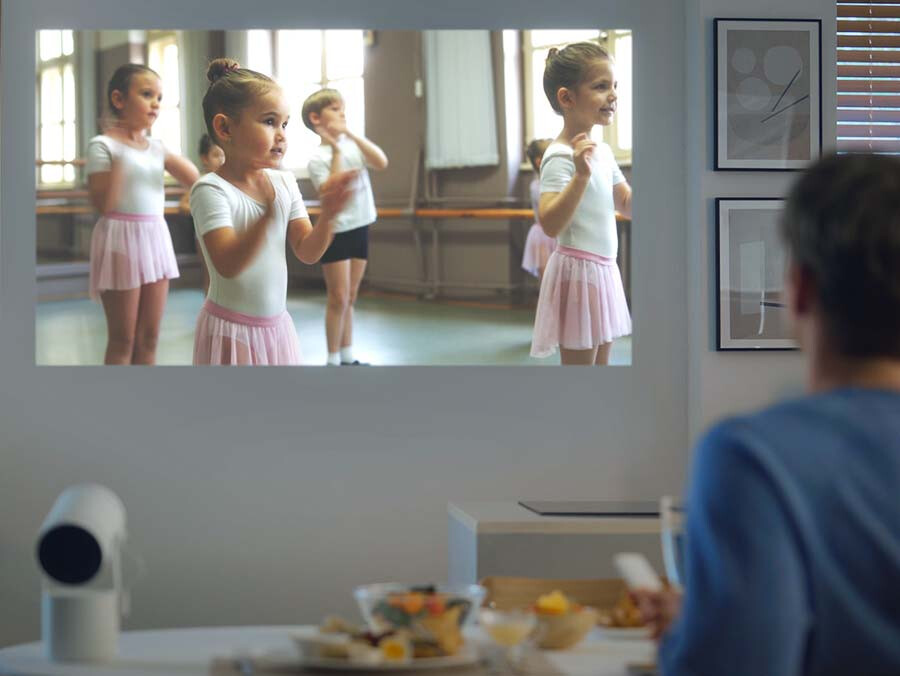
Ready for your next adventure
With its lightweight and user-friendly design, The Freestyle from Samsung is a highly mobile projector that's perfect for taking with you on trips, outings or simply for use in different rooms of your home. This projector is not only extremely lightweight, but also compact in design. This means that it fits comfortably in your bag or rucksack, so you can transport it from one place to another without much effort. Whether you're planning an outdoor movie night, giving a presentation at work or watching a football match in your friend's garden, The Freestyle is always ready to go wherever you need it.

The ability to take your projector anywhere opens up a world of possibilities. You are no longer bound by the confines of a TV or computer screen, but can extend your entertainment experience to a large screen. With The Freestyle, you can project stunning, life-size images and videos wherever you are.
In addition, the mobility of The Freestyle allows you to enjoy your entertainment experience anytime, anywhere. You can host impromptu movie nights, give presentations in unusual places or simply see your favourite content in a new light. With its lightness and portability, The Freestyle defines what it means to be truly flexible, allowing you to enjoy mesmerising moments on a big screen - whenever you want and wherever you are.
Samsung Smart TV
Samsung's The Freestyle pushes the boundaries of the traditional projector, bringing the full functionality of a Smart TV directly to you, wherever you are. With this breakthrough technology, you can experience all the benefits of a Samsung Smart TV right on your screen - a seamless connection between your mobile lifestyle and quality entertainment.

From your favourite movies and series to personalised playlists and a variety of apps, The Freestyle gives you access to a wealth of media content. Whether you want to stream Netflix, watch the latest music videos on YouTube or browse social media, it's all possible without ever having to connect your projector to another device. What's more, the integration of Smart TV features in The Freestyle gives you the freedom to enjoy your media content from anywhere. Whether you're relaxing in your living room, sunbathing in the garden or camping in the open air, you'll always have access to your personal media library. This flexibility means you're no longer tied to a fixed location to enjoy your favourite content.
Long lamp life
The longevity of the lamp in Samsung's The Freestyle projector is one of its most notable features. With an impressive lifespan of up to 25,000 hours, this lamp has been designed to fulfil your needs continuously, no matter how intensively and frequently you use the projector. To put this into a more concrete perspective: If you were to use the projector for about 3 hours a day, the lamp could last up to 22 years. That's more than two decades of consistent, high-quality projection before the lamp even needs replacing. Even with more intensive use, for example 8 hours of daily use, you can still expect an impressive lifespan of around 8 years. This incredible lifespan means you can use the projector with complete confidence and without worrying about the durability of the lamp. Whether you're planning a marathon of your favourite movies, preparing an important business presentation or hosting a gaming session, you can rest assured that The Freestyle is ready to meet your needs.
Compatible with external batteries
With the ability to connect The Freestyle to an external battery via a USB-C cable, you're no longer reliant on a stationary power source. You can flexibly move and place the projector wherever you want and continue to enjoy your media content in excellent quality. Whether you're planning an impromptu movie night in the garden, giving an outdoor presentation or simply want to watch your favourite music videos on an impromptu screen on the beach, the flexibility is limitless.
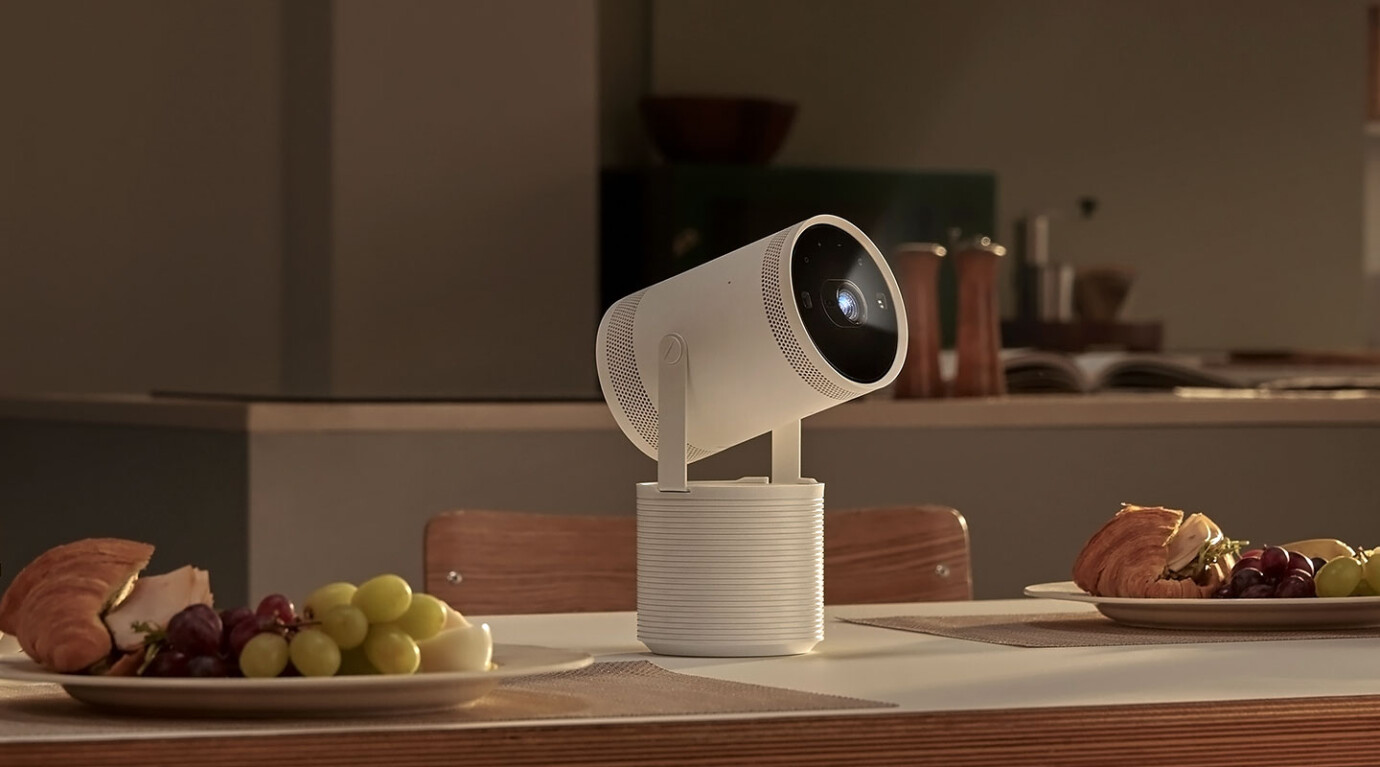
Technical data
| Name | Samsung The Freestyle LFF3C mini projector with auto keystone, HDR and Smart TV |
|---|---|
| Article number | 1000028647 |
| GTIN/EAN | 8806094951240 |
| Manufacturer SKU | SP-LFF3CLAXXXE |
| Lamp life (ECO) | 20,000 Hour |
| Lens included | Yes |
| Model name | LSP 3 |
| Projection Distance | Long Throw |
| Brand | Samsung |
| Product Type | Projector |
| Application | Mini projectors |
| Projector Type | DLP |
| Projector lamp type | LED |
| Lamp code | LED |
| ANSI Lumen | 300 ANSI Lumen |
| LED Lumen | 550 LED Lumen |
| Resolution | 1920 x 1080 Full HD |
| Aspect Ratio | 16:9 |
| Contrast Ratio | 300 :1 |
| Operating noise | 30 dB |
| Lamp life | 20,000 Hour |
| Minimum Projection Distance | 20 cm |
| Maximum Projection Distance | 265 cm |
| Minimum Projection Ratio | 1.2 |
| Maximum Projection Ratio | 1.2 |
| Minimum Lens-Shift Horizontal | 0% |
| Maximum Lens-Shift Horizontal | 0% |
| Minimum Lens-Shift Vertical | 0% |
| Maximum Lens-Shift Vertical | 0% |
| Horizontal Keystone | 30% |
| Vertical Keystone | 30% |
| Inputs | 1x HDMI , 1x Micro-HDMI |
| wireless technology | Bluetooth , WiFi |
| Features | Integrated speaker |
| Product width | 10.24 cm |
| Product height | 17.28 cm |
| Product depth | 9.52 cm |
| Weight | 0.83 kg |
| Colour | White |
| Delivery contents | Power cable , Remote control |
| Condition | New |
| Warranty | 24 Month |
| Warranty type | Bringin service Service and support information |
Downloads
Projection distance calculator
Contact our experts for help!
Image size:
Format
Format
Product safety
| Person responsible for the EU |
|---|
| Samsung Electronics GmbH |
| Am Kronberger Hang 6 |
| 65824 Schwalbach |
| Germany |
| info@samsung.de |




